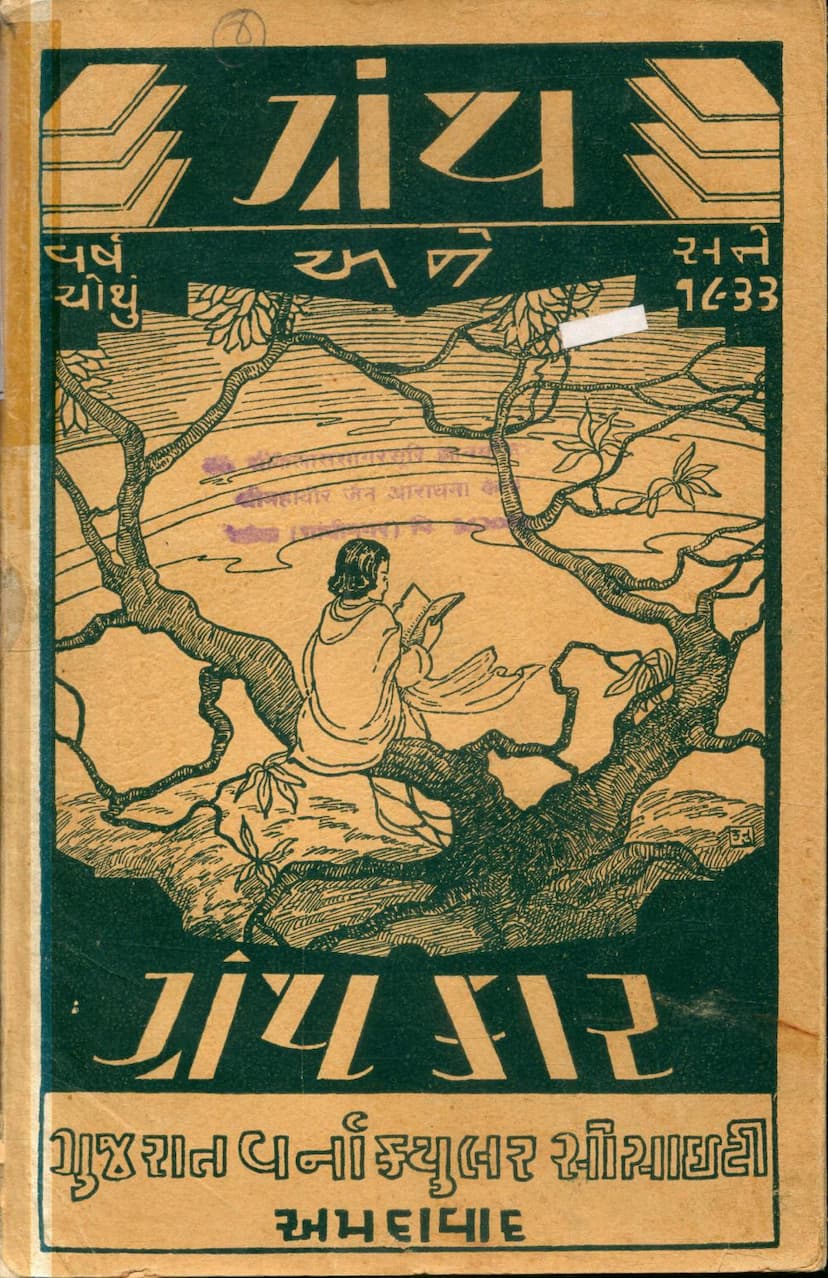Granth Ane Granthkar Pustak 04
Added to library: September 1, 2025

Summary
The book "Granth ane Granthkar Pustak 04" (Book and Author, Book 04), authored by Hiralal Tribhovandas Parekh and published by Gujarat Vernacular Society, is the fourth installment in a series dedicated to Gujarati literature. The catalog link provided is https://jainqq.org/explore/032063/1.
This book, released in 1933 (Samvat 1989), aims to be a comprehensive reference for Gujarati language and literature enthusiasts. Its primary features include:
- Discussions on Language and Literature: The book engages in discussions related to language and literature, making it a valuable resource for readers.
- Author Biographies and Works: It consistently includes biographies of authors and lists of their works, a cornerstone of the series.
- Reference Material: The book incorporates information useful for reference purposes.
- Categorized Lists of Books: A key highlight is the inclusion of a categorized list of books published in 1932, providing an overview of the year's literary output.
- Index of Periodical Articles: A detailed list of notable articles published in periodicals throughout the year is also provided.
- Bibliography for Gujarati Studies: A bibliography of books helpful for the study of Gujarati language and literature is included, considered a valuable asset for reference.
- Review of Periodicals: The book offers a discussion on periodicals, noting the difficulty of compiling such information annually. The inclusion of this section is expected to be well-received by readers.
- Poetry Section: A special contribution from scholar Deshalji Parmar includes a section on beautiful poetic works from 1932, further enhancing the book's utility.
- Focus on Children's Literature: The publication acknowledges a significant increase in children's literature in the Gujarati language in 1932, expressing hope that the children who benefit from it will contribute to Gujarat's future.
- Broad Literary Scope: The book demonstrates that Gujarati literature is expanding in all directions, with increased writing in less explored subjects like science and economics, which is considered a positive sign.
- Addressing Literary Deficiencies: While celebrating the volume of published works despite societal challenges like poverty and lack of reading culture, the author also appeals to writers to address the existing shortcomings in Gujarati literature and strive for higher standards.
- Socio-Economic Context: The book touches upon the economic challenges faced by aspiring literary scholars, where the pursuit of literature often clashes with the harsh realities of earning a livelihood. The lack of financial support for literary work is lamented as a misfortune of the country.
- Future Plans: The Gujarat Vernacular Society expresses gratitude for public support and announces plans for future publications, including an album of portraits related to authors.
Key Sections and Content:
The book is structured with an index that details its various sections. These include:
- Book Introduction (Granth Parichay)
- Preface (Prastavna)
- Categorized List of Books for 1932
- Index of Articles Published in Monthlies in 1932
- Chronology of Gujarati Literature
- List of Gujarati Periodicals
- Bibliography of Books for Studying Gujarati Literature
- Book Design (Pustak nu Rupvidhan) - A section discussing the visual aspect and typography of books.
- List of Presidents of Gujarati Sahitya Parishad
- Current Executive Board of Gujarati Sahitya Parishad
- Author Biographies:
- Biographies of Ancient Foreigners (Arvachin Videhi) - Beginning with early educators, with efforts to ensure reliability.
- Biographies of Living Authors (Vidyaman)
The extensive lists of books, periodicals, and author biographies demonstrate the book's commitment to being a comprehensive resource for the study and appreciation of Gujarati literature. The emphasis on both historical and contemporary figures, as well as the detailed breakdown of publications by category and year, makes this a significant document for understanding the literary landscape of the time.